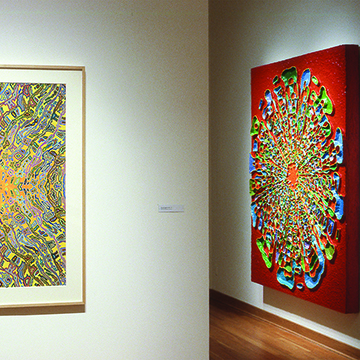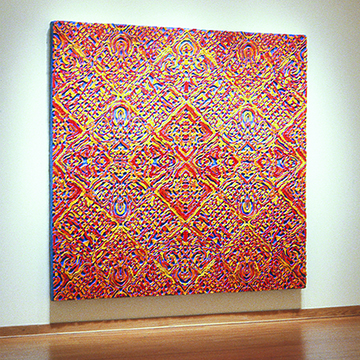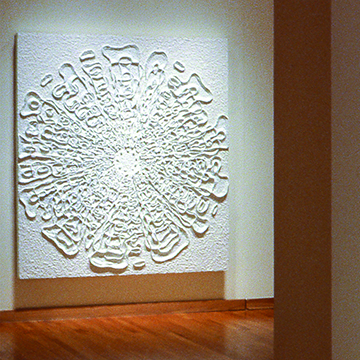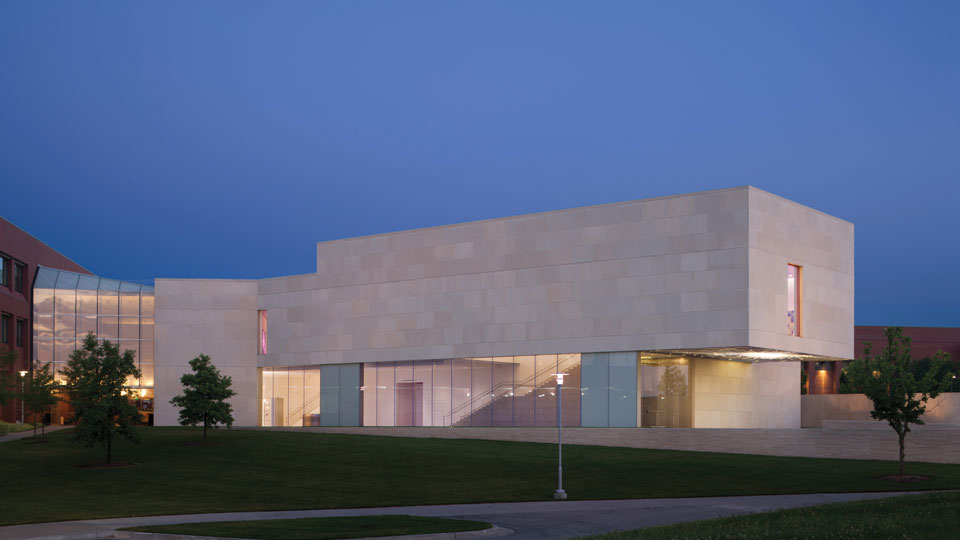Bruce Pearson · A New Visual Language
“Bruce Pearson’s Styrofoam relief constructions give letters palpable material form...he checks the pulse of our times, isolating phrases that he views as indexes of ‘where we are culturally and philosophically.’”
— Lilian Tone and Anne Umland, Museum of Modern Art
Bruce Pearson’s paintings, wall reliefs elaborately constructed from Styrofoam, are based on texts appropriated from popular culture, which are often transformed to the point of indecipherability and abstraction. The paintings provide a sensorial rich overload of color, pattern and texture. An artist committed to visual pleasure and the seduction of painting, whose tone alternates between the playful and the serious, Pearson investigates the relationship of image, word and meaning.
The nearly organic forms of his paintings suggest both cellular life forms and geologic patterns, but the hint of a text or script slowly emerges. With patient study, letters begin to appear, frequently from the negative space between the forms, and the thought of an underlying text teases the viewer. In fact, Pearson begins with a random appropriation of language - a sentence from a television show, a newspaper headline - and gradually embeds the letters and words in the pattern of the painting. His distortion of the text is not to obfuscate the communicative function of language, but to encourage a lengthy visual encounter that slows the hectic pace of modern life. The artist’s ambition is to produce a rich, meaningful visual experience that engages the viewer in a process of discovery.
Referencing color associations, three paintings with the same title, Die of Pleasure, offer color variations of an identical image — a mandala encoded text radiating outward in orgiastic ripples. One consists of oscillating, psychedelic colors. Another, suggesting spirituality, contains seventy-two variations of white; the third reveals jewel-like colors under a black, glossy surface.
Another painting, A Simple Answer, is Pearson’s largest and most complex work to date, in which quadrant sections of mirroring and reversals of text introduce chance symmetrical elements.
In his series Post-Feminist Masculinity, Pearson asks, ‟How do men act and define themselves in post-feminist culture?” In these works he parodies such popular authors as Robert Bly and his sensitivity training for men. Pearson facetiously questions Why Can’t Love Come in a Six Pack?, the title of an article he found in an on-line magazine for men. Unlike the intense hues or tones of his other paintings, the colors of this painting seem relatively calm and tame. Pearson co-opted his color scheme from a Ralph Lauren guide to fashionable interior colors for the home. As we enjoy the soothing color and busy pattern of the painting, letters begin to emerge, gradually combining into words and phrases. Eventually, a third level of images appears, shadowy outlines of figures dancing across the picture surface. Pearson’s parody is inherent in the contrast between the sarcastic text and the fashionable colors, athletes and models parading what he views as the synthetic modern conception of love and beauty.
Pearson is a graduate of the San Francisco Art Institute, and received a Louis Comfort Tiffany Foundation Biennial Award for Visual Artists in 1997. A pioneer of the Williamsburg artist community in Brooklyn, he has worked professionally for over 20 years, breaking into the mainstream New York art community in a Projects exhibition at the Museum of Modern Art in 1996. He has exhibited his work extensively since then.




